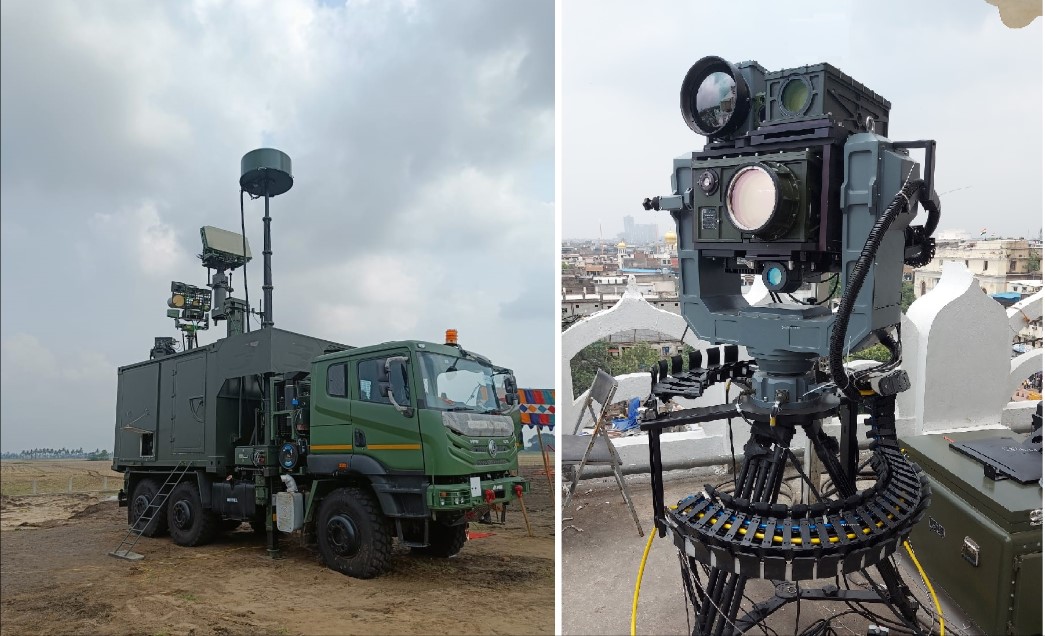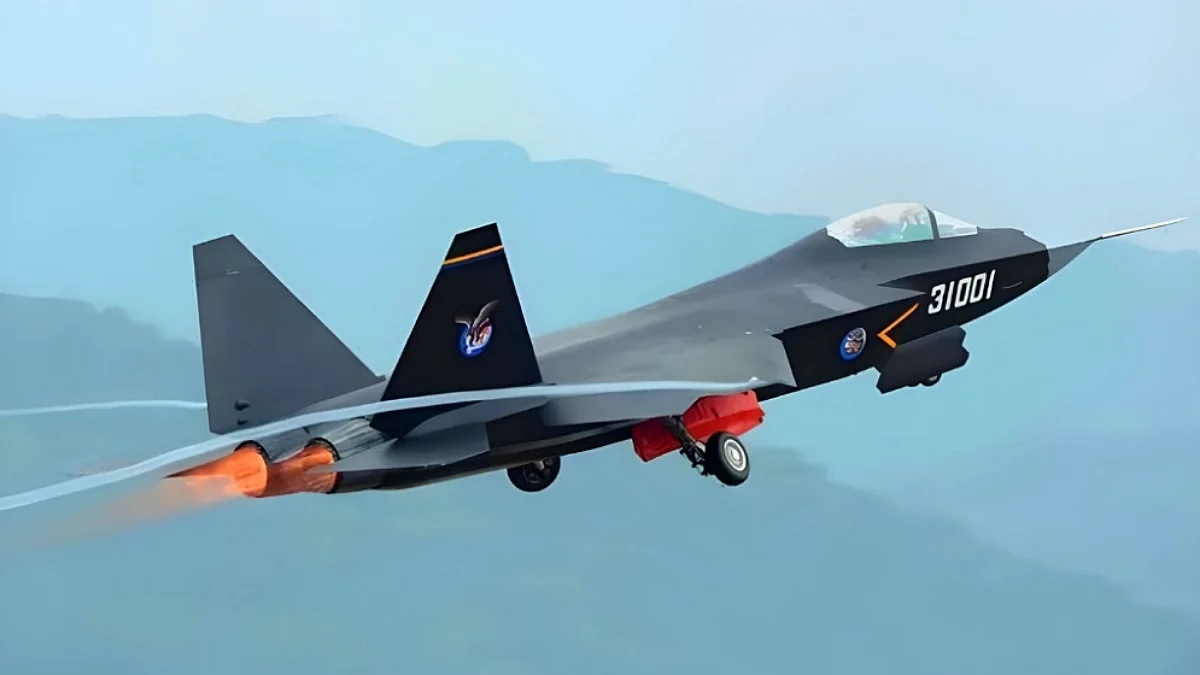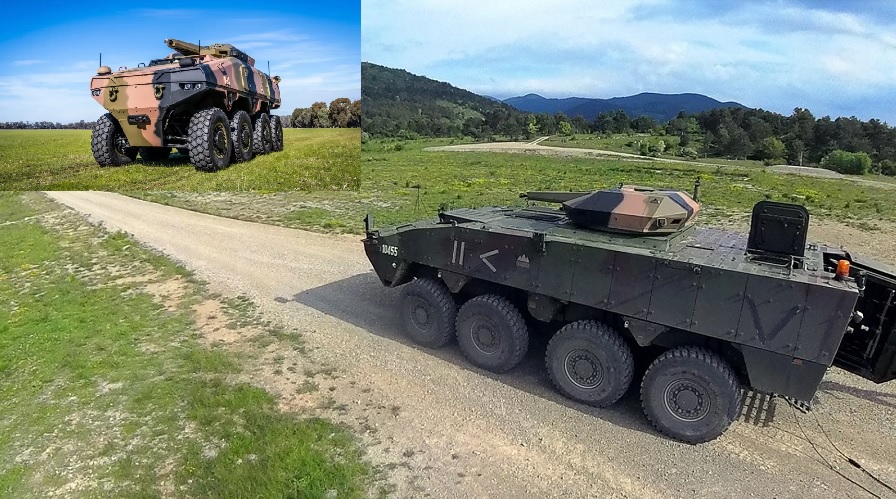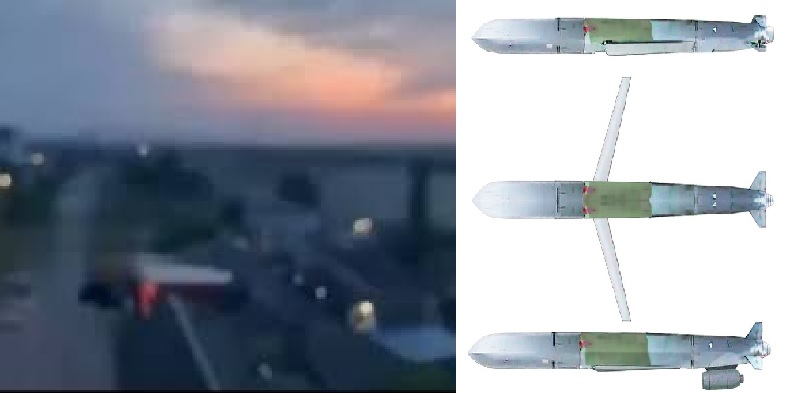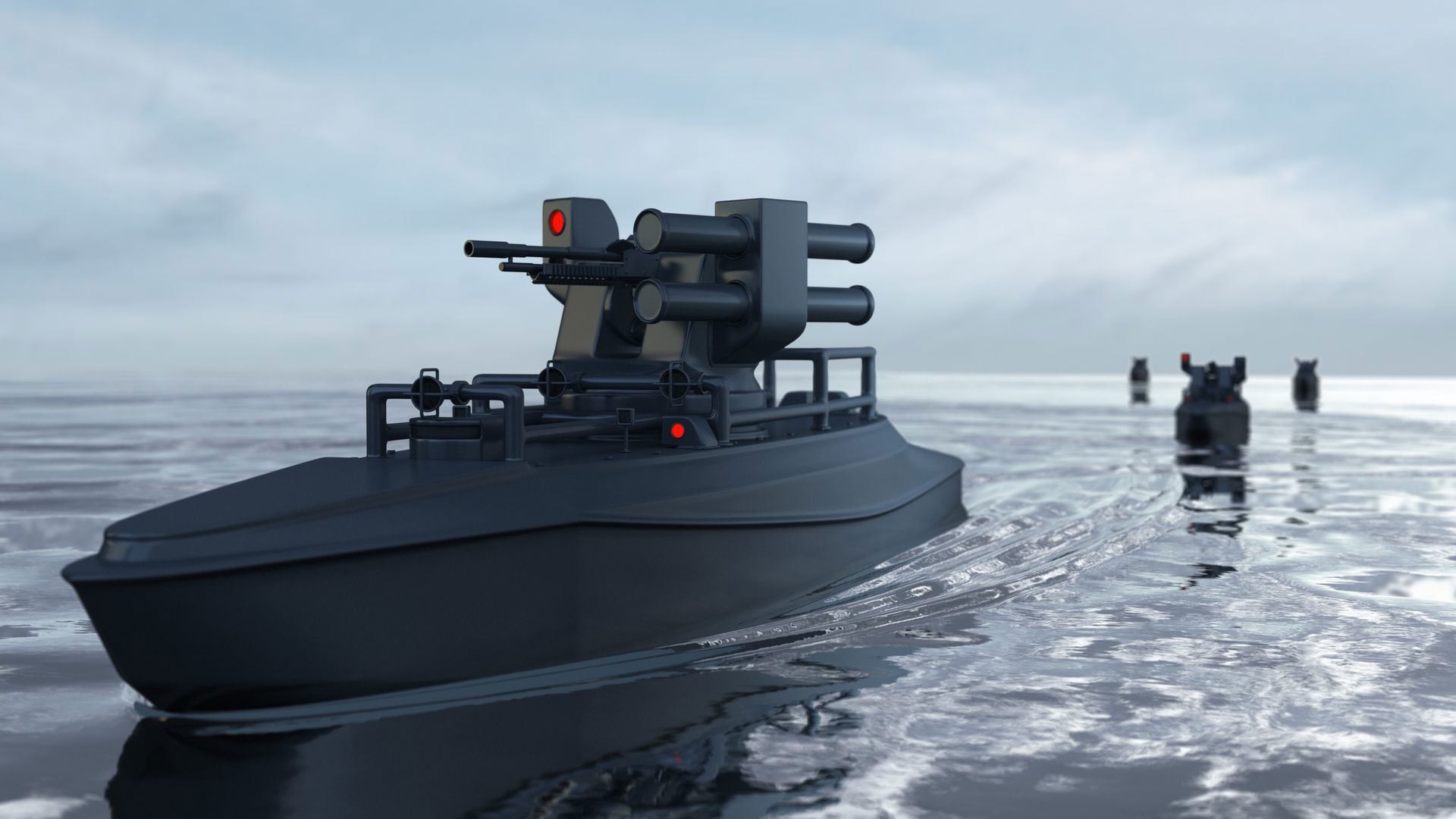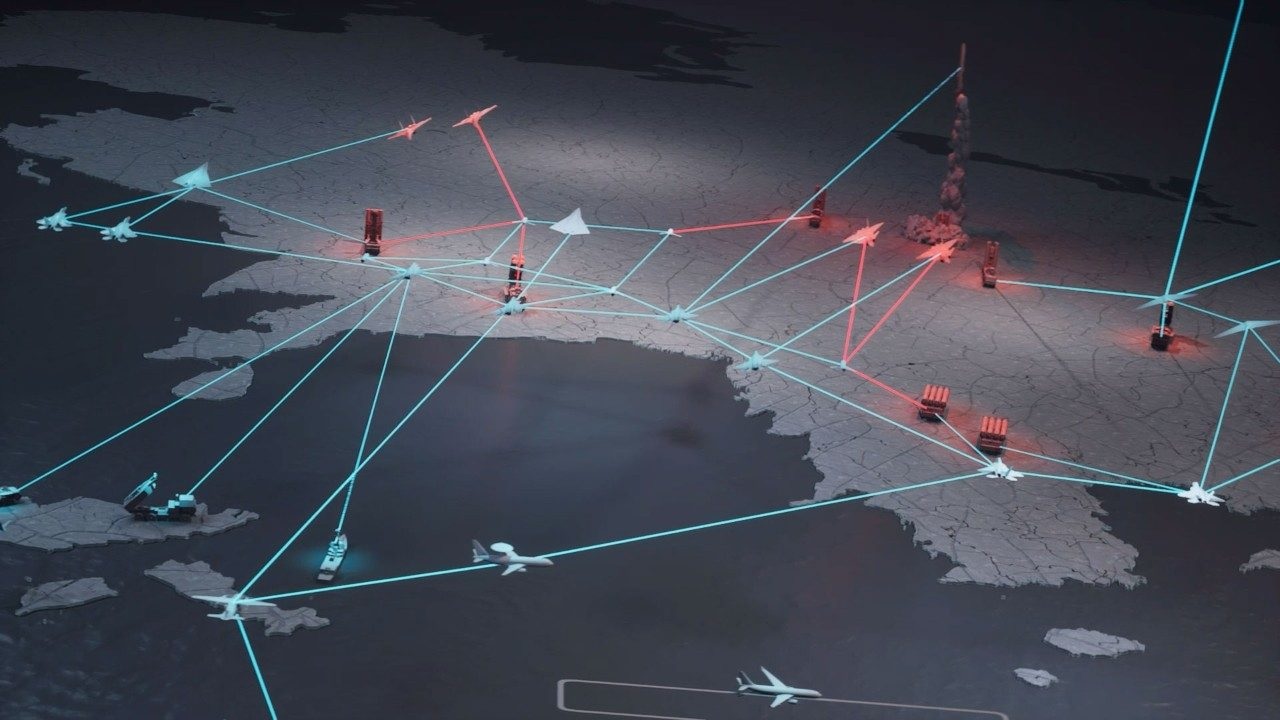India
In a notable shift in diplomatic tone, newly appointed Canadian Prime Minister Mark Carney has extended a personal invitation to Indian Prime Minister Narendra Modi for the upcoming G7 Summit set to be hosted in Canada later this year. While speaking to the press, Carney emphasized the significance of India’s global influence, stating, “The G7 plan to partner with developing countries without India would not have been impressive.” The statement is being seen as a diplomatic olive branch amid ongoing tensions between New Delhi and Ottawa, primarily centered around the killing of Khalistani separatist Hardeep Singh Nijjar on Canadian soil in 2023. However, when questioned directly about the incident and any investigation updates, Carney declined to comment, citing ongoing legal and diplomatic sensitivities. This deliberate silence marks a contrast to the aggressive rhetoric employed by his predecessor, Justin Trudeau, who openly accused Indian agents of involvement—an allegation India strongly rejected as baseless and politically motivated. Carney, who took office amid promises of restoring Canada's global image and reviving its frayed diplomatic channels, appears to be distancing his administration from Trudeau’s confrontational posture toward India. His open praise for India’s pivotal role in the Global South and his personal invitation to PM Modi underscore a strategic pivot. Observers note that Carney’s statement reflects an acknowledgment that global forums like the G7 cannot afford to sideline India—now the world's fifth-largest economy and a leading voice among developing nations. The invitation also comes at a time when India’s diplomatic clout is on a steady rise. PM Modi’s recent visits to Europe and his central role in shaping the G20 New Delhi Declaration have solidified his image as a global statesman. His expected presence at the G7 Summit is likely to bring renewed focus to issues such as global supply chain resilience, climate finance for the developing world, and digital infrastructure cooperation—areas where India has been pushing for equitable reforms. Social media in India has already picked up on Carney’s quote with the phrase “Modi Magic” trending once again. Supporters view the invitation as a diplomatic win and further proof that global leaders are recalibrating their approach to India under Modi’s leadership. As G7 leaders prepare to convene in Canada, the spotlight will be on how this invitation could signal a thaw in India-Canada ties, and whether Mark Carney can craft a new era of pragmatic diplomacy—one that balances domestic political narratives with the realities of a shifting global order. For now, while the Nijjar issue remains unresolved, Carney’s focus on rebuilding strategic partnerships—especially with India—sends a clear message: Canada recognizes that engaging with India is not just smart diplomacy; it’s a global necessity.
Read More → Posted on 2025-06-07 11:45:31World
Italy’s air defence modernisation programme has taken an important step forward as the fourth Kronos GM HP radar successfully passed its Factory Acceptance Tests (FAT). The tests were conducted at Leonardo’s advanced facilities in Fusaro / Arco Felice, Italy, with the supervision of experts from OCCAR (Organisation for Joint Armament Cooperation). This radar is a crucial component of Italy’s SAMP/T NG (Sol-Air Moyenne Portée/Terrestre New Generation) air defence system. The new-generation system is designed to protect against a wide range of airborne threats, including tactical ballistic missiles, cruise missiles, fighter aircraft, helicopters, and drones. The Kronos GM HP radar, developed by Italian defence firm Leonardo, is part of the FSAF-PAAMS (Family of Surface-to-Air Anti-Missile Systems - Principal Anti-Air Missile System) programme led by OCCAR, with the production contract awarded to EUROSAM in 2021. About Kronos GM HP Radar The Kronos GM HP (Ground Mobile High Power) is a state-of-the-art, multifunctional radar system equipped with an Active Electronically Scanned Array (AESA) antenna. This advanced technology allows the radar to perform multiple roles at once — from air surveillance to threat detection and missile guidance. Key Specifications & Features: Radar Type: Ground-based, multifunctional, high-performance AESA radar Frequency Band: C-band operation for wide area surveillance Antenna Type: AESA with solid-state transceivers Coverage: 360° azimuth coverage Long-range detection for both air-breathing targets and tactical ballistic missiles Functions: Simultaneous air surveillance, tracking, target classification, and missile guidance Capable of handling multiple threats of various types at once Range: Able to detect and track a variety of airborne threats including ballistic missiles, cruise missiles, aircraft, helicopters, and UAVs over long distances Mobility: Rapid deployability with the ability to operate from different locations as required by military operations Importance for the SAMP/T NG System The SAMP/T NG is Europe’s next-generation mobile air defence system, jointly developed by France and Italy under the FSAF-PAAMS framework. It aims to provide enhanced protection for military forces and key infrastructure against evolving airborne threats. The successful FAT of the fourth radar (unit K6) is an important intermediate milestone. It ensures that the production remains on schedule and meets the performance benchmarks required for delivery to the Italian Armed Forces in the coming years. According to OCCAR, numerous tests were conducted to evaluate the radar’s full range of operational capabilities. These included assessments of detection accuracy, tracking stability, target classification, and its integration with the SAMP/T NG fire control system. What Comes Next With this milestone achieved, the production and testing of remaining radars for Italy’s SAMP/T NG systems will continue, keeping the programme on track for deployment. The addition of these cutting-edge Kronos GM HP radars will significantly strengthen Italy’s ability to monitor and counter modern aerial and missile threats, contributing to the country’s national and NATO-aligned air defence posture.
Read More → Posted on 2025-06-06 15:59:43World
France has taken a major step forward in modernizing its light helicopter fleet by officially beginning flight trials of the new AirMaster C radar system, which will be installed on the upcoming H160M Guepard helicopters. Developed by Thales under the DRAGON program, this advanced radar promises to significantly boost the surveillance, detection, and targeting capabilities of the French Armed Forces. What is the AirMaster C Radar? The AirMaster C is a next-generation AESA (Active Electronically Scanned Array) radar, specifically designed for light, airborne platforms like helicopters and drones. It operates in the X-band frequency and uses cutting-edge Silicon-Germanium (SiGe) technology, which makes it highly compact, lightweight, and energy-efficient without sacrificing performance. It’s built with a modular structure and open software architecture, meaning it can be easily upgraded and customized. The radar is also AI-ready, supporting artificial intelligence-driven features like: Autonomous tactical analysis Machine learning-based detection Automatic target classification This allows the radar to process large amounts of data, recognize different targets on its own, and assist operators in making faster, smarter decisions during missions. Specifications of the AirMaster C Radar Feature Details Type Active Electronically Scanned Array (AESA) Frequency Band X-band Technology Silicon-Germanium (SiGe) based Key Modes Tracking, SAR (Synthetic Aperture Radar), GMTI (Ground Moving Target Indicator), MTI (Moving Target Indicator), Mapping Processing Capability AI-driven, autonomous tactical analysis, machine learning-enabled target classification Operation Mode interleaving — multiple radar functions at once Energy Consumption Low power, high efficiency due to SiGe tech Size & Weight Compact, optimized for light airborne platforms Integration Modular, open software, compatible with military-standard data buses Testing and Trials The French Defence Procurement Agency (DGA) confirmed that flight testing began in May 2025 at the DGA Flight Test Centre in Istres. A modified SA330 Puma helicopter is currently serving as the test platform. These trials aim to evaluate: Multi-target detection capabilities Performance in degraded environments Thermal stability and vibration resistance Electromagnetic compatibility Integration with onboard avionics and computers Once these assessments are completed, the radar will be cleared for integration with the H160M Guepard fleet. The Guepard Light Joint Helicopter The H160M Guepard, developed by Airbus Helicopters, is part of France’s ambitious Light Joint Helicopter (HIL) program aimed at replacing multiple legacy helicopters in the Army, Navy, and Air & Space Force with a single, versatile platform. Key Features of the H160M Guepard: Modular airframe for multiple mission profiles Reinforced survivability for contested environments Advanced digital cockpit and avionics Common operational configuration for all military services Equipped with state-of-the-art sensors like the AirMaster C radar Deployment Plans Under France’s 2024–2030 Military Programming Law, the Armed Forces will induct 169 Guepard helicopters by 2030: 80 for the French Army (ALAT): Armed reconnaissance, fire support, special forces missions 49 for the French Navy: Maritime combat, special operations, anti-surface warfare 40 for the French Air & Space Force: Search and rescue (SAR), air surveillance, intelligence gathering A New Chapter in French Aerial Modernization The integration of the AirMaster C AESA radar with the Guepard helicopter marks a significant advancement for the French military’s airborne capabilities. It ensures better situational awareness, rapid multi-target detection, and AI-assisted decision-making for missions ranging from maritime surveillance to special operations. Additionally, the successful development of this radar under the DRAGON program not only strengthens France’s domestic sensor technology but also opens up future export opportunities, offering a competitive, modern, multi-role helicopter system for international defense markets.
Read More → Posted on 2025-06-06 15:57:42India
Elon Musk’s Starlink has officially received the green signal from the Indian government to offer satellite-based internet services across the country. The Department of Telecommunications (DoT) has granted Starlink a Global Mobile Personal Communication by Satellite (GMPCS) license, along with permissions under the VSAT Services and ISP Category-A of the unified license framework. This move places Starlink as the third company in India to secure a GMPCS license, joining the ranks of Bharti-backed OneWeb and Reliance Jio. With this license, Starlink is now authorized to operate satellite-based mobile communication services throughout India, especially targeting remote and rural areas that lack access to traditional internet infrastructure. The GMPCS license allows companies to provide seamless satellite connectivity by deploying ground terminals that communicate with low Earth orbit (LEO) satellites. These systems are particularly useful in places where laying fiber optic cables or setting up mobile towers is either technically challenging or economically unviable. Starlink’s service is expected to play a crucial role in bridging the digital divide in India's vast and diverse geography. As part of the regulatory obligations, Starlink must comply with all national security norms, including provisions for lawful interception and protection of user privacy. The company will also need to meet stringent standards for satellite communication quality and safety. Union Minister for Communications Jyotiraditya Scindia emphasized the importance of satellite internet in expanding connectivity across India. Speaking to the media, he noted that true internet penetration can only be achieved through space-based technology in areas where terrestrial infrastructure is either lacking or infeasible. In addition to securing the necessary licenses, Starlink has also taken steps to strengthen its foothold in the Indian market. The company is reportedly collaborating with Indian telecom giants Airtel and Jio to distribute its services. By leveraging these companies’ extensive dealership networks, Starlink aims to make its high-speed internet service easily accessible to customers nationwide. Earlier in April, Starlink representatives met with India’s Commerce Minister Piyush Goyal to discuss their long-term plans. The meeting focused on Starlink’s advanced technology, its current partnerships, and its potential investment opportunities in India. With regulatory approval in hand and strategic partnerships underway, Starlink is now poised to transform the internet landscape in India—especially for the millions living in far-flung villages and mountainous terrains—by delivering reliable, high-speed internet from space.
Read More → Posted on 2025-06-06 15:52:31World
The German Navy is taking a significant step towards modernizing its naval capabilities by officially beginning preparations to introduce unmanned surface vehicles (USVs) into its fleet. After successfully testing the BlueWhale autonomous underwater vehicle last year, the German Navy is now turning its attention to the surface domain, with plans to experiment, evaluate, and eventually procure combat-capable USVs. This initiative is part of Germany’s Future Combat Surface System (FCSS) program — a forward-looking project aimed at integrating both manned and unmanned systems for next-generation naval warfare. A New Chapter in Naval Strategy Vice Admiral Jan Christian Kaack, Inspector of the Navy, recently revealed that the FCSS program would be one of the German Navy’s flagship efforts this year. According to the newly published “Course Marine” strategy paper, the long-term goal is to create a highly networked naval force combining manned warships, autonomous drones, and unmanned vehicles. This concept also involves managing drone swarms and integrating them with existing assets like K130 corvettes. The plan outlines the procurement of at least 18 USVs, with each K130 corvette eventually being paired with two USVs for joint missions, enhancing operational flexibility and reducing risks to human crews. What Will These USVs Be Capable Of? The German Navy’s FCSS program envisions highly capable unmanned surface vehicles equipped for a range of roles — from surveillance and reconnaissance to direct combat operations. The procurement process will start with Operational Experimentation (OPEX) campaigns, where different USV designs will be tested under real-world conditions to assess their performance and military utility. The first phase of these sea trials is scheduled between September 15, 2025, and October 5, 2025, in the Baltic Sea near Eckernförde. Detailed Specifications for the USV Trials To participate in these trials, manufacturers must meet strict minimum requirements. Here’s a breakdown of what the German Navy is seeking for its combat USVs: First Trial Campaign (September–October 2025) Platform Technology Readiness Level (TRL): 9 (Fully mature and operational) Autonomy: Capable of autonomous navigation using waypoints Remote Operation: Must support remote piloting Emergency Mode: Ability to operate with a minimal crew if needed Collision Avoidance: Initial active collision avoidance system Range: Minimum 300 nautical miles at 38 knots Situational Awareness Systems: Command & Control (C2) system Navigation radar Electro-Optical (EO) sensor systems Armament: At least one weapon system with a minimum 30mm caliber gun Optional capability for loitering munitions or missiles Payload/Weight Reserve: 6 tons Second Trial Campaign (November 2025) The requirements remain largely similar, with a few adjustments: Operational Readiness: Capable of operating in sea state 5 Endurance: At least 5 continuous days at sea Armament: Guns as primary weapon Optional provision for loitering munitions or missiles Potential Contenders Meeting a TRL of 9 is a demanding requirement, and only a few USVs worldwide currently meet this standard. Possible candidates include: Autonomous Ocean Core (Saab): A system based on the Combat Boat 90, already operational. Seagull USV (Elbit Systems): In active use with at least one navy, offering anti-submarine, mine countermeasure, and surface combat capabilities. However, as per the German Bundeswehr planning office, the OPEX campaigns are purely for technology evaluation and not an immediate armament procurement process. The focus is to assess operational capabilities, integration potential with existing fleet systems, and identify areas for future improvement. Shaping the Future of German Naval Operations The integration of unmanned systems like USVs marks a strategic shift in Germany’s naval doctrine, aiming to enhance maritime situational awareness, reduce crew risks, and improve combat effectiveness. Through programs like FCSS, the German Navy plans to evolve into a hybrid force of manned and unmanned assets, paving the way for the next generation of naval warfare in the increasingly contested waters of Europe and beyond. The outcome of these trials will not only determine the future of USV procurement in Germany but could also influence broader NATO naval strategies in the years to come.
Read More → Posted on 2025-06-06 15:51:18India
In a major testament to India's growing defense manufacturing capabilities, Taiwan has officially expressed interest in purchasing the indigenous D4 anti-drone system developed by India’s Defence Research and Development Organisation (DRDO). The request marks a significant moment in strategic Indo-Pacific defense relations and underscores the increasing global trust in Indian-made defense systems under the 'Make in India' initiative. The D4 system—short for Drone Detect, Deter, and Destroy—has earned international attention after demonstrating its operational excellence along the India-Pakistan border. Most notably, the system was used successfully to neutralize a fleet of Turkish-origin drones launched by Pakistan. These drones, believed to be Bayraktar variants or similar models, were shot down or jammed using D4's advanced electronic warfare suite and directed-energy weapons. What is the D4 Anti-Drone System? The D4 system is a comprehensive counter-unmanned aerial system (C-UAS) solution developed by DRDO in collaboration with Bharat Electronics Limited (BEL). It integrates multiple layers of defense—including radar, electro-optical sensors, RF detectors, jammers, and kill mechanisms—designed to identify, track, and neutralize rogue drones. Key Specifications and Features: Detection Capabilities: AESA-based radar for 360-degree coverage Electro-optical/infrared (EO/IR) tracking for day and night operations RF detectors to identify communication signatures of drones Neutralization Methods: RF/GNSS jamming to disrupt navigation and control signals High-energy laser system (2kW+) for hard kill option Directed microwave energy for swarm drone mitigation Range and Response Time: Detection range of up to 4 km for micro-drones Engagement range up to 2 km for jamming and directed-energy attacks Real-time automatic threat classification and response deployment Mobility and Integration: Available in both fixed and mobile variants Compatible with military vehicles, ships, and critical infrastructure Can be integrated into broader air defense command networks Why is Taiwan Interested? Taiwan, increasingly vulnerable to the threat of swarm drone incursions and asymmetric warfare tactics from China, is actively modernizing its counter-drone defenses. The island nation is looking for compact, reliable, and proven anti-drone technologies that can be quickly deployed around sensitive installations, including airports, military bases, and civilian zones. The D4 system’s successful interception of Turkish-origin drones in actual operational settings against Pakistan adds to its credibility. For Taiwan, the decision to consider the D4 is not just about buying a piece of equipment—it’s about acquiring battle-tested technology from a trusted partner in the Indo-Pacific region. A New Milestone for 'Make in India' The potential export of the D4 system to Taiwan would mark a significant milestone in India’s defense export journey. From being a net importer of arms, India is now poised to become a key supplier of high-end defense technologies to friendly nations. Taiwan’s approach comes on the heels of interest shown by other nations like Armenia and the Philippines in various Indian defense platforms. India’s growing clout in the global defense market reflects the success of its policy to design, develop, and deploy indigenous systems capable of matching or surpassing imported alternatives. Strategic Implications If the deal materializes, it could have wider implications for India-Taiwan defense cooperation, which until now has largely remained discreet due to regional sensitivities involving China. An open transfer or sale of military hardware would signal a more assertive stance by India in supporting regional democracies and bolstering collective security against unmanned aerial threats.
Read More → Posted on 2025-06-06 15:46:53World
In a major development for regional air power dynamics, Pakistan is set to receive advanced fifth-generation stealth fighter jets from China within the coming months. According to recent confirmations from Pakistani government officials, the long-anticipated FC-31 Gyrfalcon stealth aircraft will soon begin joining the Pakistan Air Force (PAF) as part of its ongoing fleet modernization program. Pakistan had first hinted at this acquisition in 2024 during the induction of other Chinese-made military aircraft and transport planes. While the specific deal structure and financial terms have not been publicly disclosed, earlier reports suggest that Pakistan could acquire between 30 to 40 units of the FC-31, marking a significant leap in its air combat capabilities. About the FC-31 Gyrfalcon Developed by China’s state-owned Shenyang Aircraft Corporation, the FC-31 Gyrfalcon is a fifth-generation multi-role stealth fighter jet designed for both air superiority and strike missions. Originally intended for service with China’s own air and naval forces, the FC-31 has gained international attention as China’s answer to American fifth-generation fighters like the F-35 Lightning II. Key Specifications: Length: 17 meters (56 feet) Wingspan: 12 meters (38 feet) Height: 4.8 meters (15.7 feet) Maximum Speed: Mach 1.8 (approximately 2,223 km/h or 1,381 mph) Operational Range: 2,000 kilometers (3,219 miles) Service Ceiling: 16,000 meters (52,493 feet) Engines: Twin Klimov RD-93 or WS-13E afterburning turbofans Advanced Features: The FC-31 boasts low radar cross-section (RCS) stealth design, enabling it to evade enemy detection. It is equipped with state-of-the-art electronic warfare systems, infrared search and track (IRST), and an advanced active electronically scanned array (AESA) radar. The aircraft has internal weapon bays and multiple hardpoints on its wings, allowing it to carry a mix of air-to-air missiles, guided bombs, and supersonic multi-domain missiles. A particularly notable addition to the Pakistani fleet will be the inclusion of the PL-17 long-range air-to-air missile on these jets. The PL-17 reportedly has a range of over 400 kilometers (249 miles), giving Pakistan’s air force a significant edge in beyond-visual-range (BVR) engagements. Strategic Importance: For Pakistan, acquiring the FC-31 represents a significant boost in its capability to counter regional threats and maintain a credible deterrent, particularly in light of India’s own modernization programs, which include the indigenous HAL Tejas Mk1A, upcoming Tejas Mk2, and the fifth-generation Advanced Medium Combat Aircraft (AMCA) project. The addition of these stealth fighters, coupled with long-range weaponry and electronic warfare systems, is expected to considerably enhance Pakistan’s defensive and offensive aerial operations.
Read More → Posted on 2025-06-06 15:39:07World
In a revelation that has sparked significant debate, Israeli Prime Minister Benjamin Netanyahu has confirmed that Israel is supporting an armed group in Gaza that opposes Hamas. This admission follows claims made by former Israeli Defence Minister Avigdor Liberman, who alleged that the government had handed weapons to what he described as “criminals and felons.” The group in question, reportedly associated with a local Bedouin tribe led by Yasser Abu Shabab, is active in the Rafah area of southern Gaza. According to the European Council on Foreign Relations, Abu Shabab is known not for political resistance but for heading a so-called "criminal gang" involved in looting and other illicit activities, including attacks on aid convoys. Netanyahu defended the strategy, arguing that enlisting local forces against Hamas was a move that ultimately benefits Israeli soldiers. “What did Liberman leak? That security sources activated a clan in Gaza that opposes Hamas? What is bad about that? It is only good; it is saving lives of Israeli soldiers,” he said in a video statement posted online. However, the move has raised questions about the nature of Israel’s partnerships in Gaza. Michael Milshtein, a Palestinian affairs expert from Tel Aviv’s Moshe Dayan Center, explained that the Abu Shabab group is not a traditional militia but a network rooted in smuggling and criminal operations. He noted that Abu Shabab had previously been jailed by Hamas and that his clan leaders have since disowned him, branding him a collaborator and gangster. Despite the controversy, reports suggest that Israeli authorities, possibly including the internal security agency Shabak, have provided the group with weapons, financial support, and even protection from military action in exchange for acting against Hamas. Hamas responded harshly, accusing the group of betrayal and collaboration with Israel, and calling on Palestinian civilians to reject them. Recent incidents have also highlighted the tensions surrounding the group’s activities. Hamas allegedly killed four members of Abu Shabab’s faction just days before Netanyahu’s remarks, indicating that the conflict between Hamas and the militia has escalated. Additionally, there are unconfirmed reports that Abu Shabab’s brother was killed by Hamas during efforts to suppress attacks on UN aid convoys. The group, which calls itself the "Popular Forces," has denied acting as an Israeli proxy. In a statement posted on Facebook, it claimed, “We have never been, and will never be, a tool of the occupation.” The group also insisted its weapons are old and sourced from local supporters. Critics warn that arming a criminal-linked militia in a war zone could backfire. “This is a fantasy, not something you can really describe as a strategy,” Milshtein cautioned. “I really hope it will not end with catastrophe.” As the war between Israel and Hamas nears its twentieth month, the use of unconventional alliances to weaken Hamas may carry more risks than rewards, especially if those alliances are built on shaky ground.
Read More → Posted on 2025-06-06 15:35:11World
In a fiery public spat that has sent shockwaves across both political and tech circles, former U.S. President Donald Trump and billionaire entrepreneur Elon Musk have dramatically fallen out — ending what was once touted as a mutually beneficial relationship between politics and private innovation. From admiration to antagonism, the clash between the two powerhouses escalated sharply over the past week, triggering serious implications for the future of SpaceX and U.S. space dominance. The Fallout Begins The storm began when Trump publicly criticized Musk, saying: “I’m disappointed in Elon. Elon and I had a great relationship. I don’t know if we’ll ever be together again.” This surprising statement came amid growing friction between Musk’s opposition to a major budget bill — which Trump reportedly supported — and the former president’s claims that Musk had no real objections. Trump attempted to downplay Musk's dissent, saying: “Elon has no problem with this bill.” But Musk was quick to respond with biting clarity: “Wrong. This bill was never shown to me once. It was passed overnight.” The disagreement revealed the deep cracks forming behind the scenes, with Musk increasingly distancing himself from the former president’s policy moves, which he now views as reckless and opaque. Why Elon Musk Left the Trump Administration Elon Musk had initially served as an economic advisor during Trump’s presidency, hoping to steer innovation policy, green energy investments, and space exploration in a pragmatic direction. However, tensions grew over time. Musk left the Trump administration in 2017 following Trump's decision to pull out of the Paris Climate Accord. Musk had made it clear that climate change and sustainable energy were non-negotiables for him. At the time, Musk tweeted: “Climate change is real. Leaving Paris is not good for America or the world.” That marked the beginning of a widening ideological divide — but back then, the separation was relatively quiet. Today’s conflict, however, is anything but. Trump’s Retaliation: Targeting SpaceX Now, years after that initial break, the feud has reached new heights. Trump, infuriated by Musk’s criticisms and refusal to align with his agenda, lashed out with a direct threat to SpaceX: “The easiest way to save money in our budget — billions of dollars — is to stop Elon’s government grants and contracts.” This threat has massive implications. SpaceX holds contracts with NASA, the Pentagon, and other federal agencies, worth tens of billions. Trump’s statement, while not an official order, sent tremors through the aerospace and defense sectors. Many now question whether future administrations aligned with Trump’s ideology might jeopardize SpaceX's dominance in government space operations. Elon Musk Fires Back Elon Musk’s response was swift and stinging: “SpaceX will begin decommissioning its Dragon spacecraft immediately after Trump’s statement on canceling my government contracts.” While it’s unclear whether SpaceX is actually pulling the plug on Dragon — which has been instrumental in ferrying astronauts and cargo to the ISS — the statement served as a symbolic warning. Musk seems to be making it clear: if the U.S. government doesn’t want him, he’ll take his vision and capital elsewhere — possibly even more aggressively into the private or international sector. And in a mic-drop moment that went viral, Musk added: “Have a nice day, DJT… Mark this post for the future.” Musk’s Claim: ‘Without Me, Trump Would Not Have Won’ Adding fuel to the fire, Musk claimed that Trump owed part of his 2016 victory to him: “Without me, Trump would not have won.” It’s unclear what Musk was specifically referencing — possibly the influence of Tesla and SpaceX’s American success stories on the economy, or perhaps Musk’s past social media support that appealed to young technocrats. Either way, it suggests Musk believes his influence on innovation and culture had real political weight — weight Trump no longer appreciates. What Comes Next? This public unraveling could have far-reaching consequences. If a future Trump-aligned administration attempts to curb SpaceX funding or favor competitors like Blue Origin, America’s space dominance could suffer. At the same time, Musk’s growing disdain for political interference might push him toward more international cooperation or privately-funded ventures — shifting the future of space away from the hands of governments altogether. Meanwhile, political observers are watching closely: Will Musk throw his influence behind a Trump rival in 2024 or 2028? Could this feud evolve into a full-blown cultural and economic battle between the old populist right and Silicon Valley libertarians?
Read More → Posted on 2025-06-06 15:32:28World
In a move that reaffirms America’s longstanding leadership within NATO, the United States has nominated Air Force General Alexus Grynkewich as the alliance’s new Supreme Allied Commander Europe (SACEUR). The decision comes at a critical time, with ongoing tensions in Europe due to the war in Ukraine and growing strategic attention toward China in the Indo-Pacific. General Grynkewich’s appointment was officially announced by the U.S. Department of Defense and backed by all 32 NATO member countries. The nomination, made by former President Donald Trump, now awaits final confirmation by the U.S. Senate. Grynkewich will succeed Army General Christopher Cavoli, who played a key role in NATO’s military posture during Russia’s invasion of Ukraine and in coordinating military aid to Kyiv. The post of SACEUR is not only one of the most influential positions in NATO but also a symbol of U.S. commitment to European security. Since its creation in 1951, the role has always been held by an American general, beginning with Dwight D. Eisenhower. That tradition had come under question earlier this year when reports emerged suggesting that Washington was considering giving up the leadership position as it reevaluated its global force posture and began pivoting more attention toward the threat posed by China. However, the nomination of Grynkewich has helped ease concerns among European allies. NATO diplomats made it clear that any American withdrawal from this command role would be deeply symbolic and potentially destabilizing, signaling a retreat from European defense leadership. The confirmation of a new U.S. commander has therefore reassured alliance members of Washington’s continued investment in collective defense. General Grynkewich, a seasoned Air Force officer with significant operational experience in the Middle East and Europe, is expected to lead NATO through an evolving geopolitical landscape. His role will involve continuing the support for Ukraine, managing deterrence strategies against Russia, and adjusting NATO’s military planning to meet new threats from emerging global competitors. As the alliance prepares for future challenges, Grynkewich’s leadership is seen as a pivotal factor in maintaining NATO’s strength and cohesion. The reaffirmation of U.S. leadership in Europe, despite broader global shifts, underscores the enduring importance of transatlantic unity in today’s complex security environment.
Read More → Posted on 2025-06-06 15:29:28World
In a groundbreaking achievement for modern radar technology, Chinese researchers have developed a revolutionary system that can track moving targets on the ground without the radar aircraft ever emitting a detectable signal. This advancement could transform both military and civilian surveillance, offering unprecedented stealth and clarity in even the most cluttered environments. The breakthrough came from a study published on May 12 in China’s prestigious Journal of Radars, led by renowned radar scientist Li Zhongyu from the University of Electronic Science and Technology of China in Chengdu. The innovation marks the world’s first successful demonstration of a passive bistatic airborne radar system capable of real-time moving target detection without breaking radio silence. How It Works: The Silent Surveillance Technique The test involved two modest Cessna-208 Caravan aircraft flying in formation, separated by several hundred meters in altitude. One aircraft actively emitted radar signals while the second, flying silently below, collected the scattered echoes from the terrain without transmitting any signals itself. The challenge lay in detecting moving objects — in this case, three fast-moving vehicles across a landscape dense with vegetation and buildings — while filtering out the overwhelming background clutter from land, trees, and man-made structures. Traditional radar systems struggle in such environments because moving targets often get lost in a storm of reflected signals, causing issues like range migration and Doppler frequency spread, which smear the target’s signal and make precise detection nearly impossible. The Breakthrough: Space-Time Decoupling Two-Channel Clutter Cancellation Li’s team overcame these problems using a sophisticated three-step process: Motion Correction via Keystone Transform and High-Order Compensation:This process aligns scattered target energy into single range cells, correcting for range migration and making the moving objects easier to isolate. Spectrum Compression:By compressing the spread-out Doppler frequencies caused by moving targets, the radar sharpens its ability to distinguish them from background noise. Space-Time Decoupling Clutter Cancellation:The core innovation uses a mathematical matrix derived through singular value decomposition (SVD) to disentangle the non-linear, chaotic clutter. This method aligns spatial frequencies to zero while preserving the targets' relative motion profiles, effectively removing unwanted echoes and leaving only the clean signals from moving targets. World-First Results When the new technology activated, the radar display instantly cleared. Three moving vehicles previously lost in a haze of background signals became crystal clear. The system achieved more than 20 decibels of clarity improvement over conventional methods. Even more impressive, in simulations involving sea clutter — famously difficult for radars due to unpredictable, fast-changing wave patterns — the new system succeeded in detecting moving targets at ultra-low signal-to-noise ratios where existing systems failed. Unlike many cutting-edge radar systems relying on artificial intelligence, this method prioritizes high computing efficiency without the need for massive processing power. This makes it much more suitable for real-world applications aboard various aircraft, ranging from surveillance planes to stealth fighters. Military Implications: The New Era of Undetectable Radar The system’s potential for military use is enormous. Aircraft fitted with such technology could silently scan vast areas for moving vehicles, ships, or missiles without ever emitting signals that could betray their presence. This would make them far harder to jam or detect, a game-changer in electronic warfare. China’s rapid progress in radar technology is also raising international concerns. Some experts have speculated that similar low-probability-of-intercept (LPI) radars played a role in past conflicts, like the Indo-Pakistan air battle, where Indian jets encountered unexpected electronic warfare tactics. Traditional LPI radars, while harder to detect, still carry some risk of exposure. But with Li’s passive, space-time decoupling radar system, even that risk could disappear. Technical Specifications & Highlights Type: Passive bistatic airborne radar Platforms: Tested on Cessna-208 Caravan; adaptable to fighter jets, drones, AWACS Detection Range: Capable of tracking fast-moving ground vehicles over undulating terrain Clutter Rejection: More than 20 dB improvement over conventional systems Special Features: Keystone transform and high-order motion correction Doppler spectrum compression Space-time decoupling via singular value decomposition (SVD) Environment: Effective in complex land clutter and chaotic sea clutter Computing Efficiency: High; does not require AI or heavy computational resources Operational Benefit: Operates without emitting any detectable radar signals, reducing interception and jamming risks The Future of Stealth Radar This achievement positions China at the cutting edge of radar technology development. It not only strengthens surveillance and battlefield awareness capabilities but could also set the stage for a new generation of airborne systems that combine extreme stealth with unmatched detection power. Li Zhongyu’s work, already recognised with China’s top national defence technology awards, may very well shape the future of airborne reconnaissance and military strategy worldwide.
Read More → Posted on 2025-06-06 12:01:10World
BAE Systems Australia’s latest innovation, the VANTAGE Automated Turret System (ATS), has successfully demonstrated its precision and performance in live-fire trials held in Slovenia. Mounted on a Slovenian Army Patria AMV vehicle, the turret impressed defence experts by hitting targets with remarkable accuracy at distances up to 750 metres. The VANTAGE ATS is being developed as part of the ATLAS Combat Capability Vehicle (CCV) program and represents a major step in automated combat systems. Developed in collaboration with Slovenian firm Valhalla Turrets, the turret is designed for both crewed and uncrewed vehicle platforms. Its successful testing not only showcased the system’s adaptability but also validated its operational effectiveness under live conditions. Kisa Christensen, Director of Integrated Defence and Autonomy Systems at BAE Systems Australia, confirmed that the results from the test exceeded expectations. She noted that the system demonstrated high-performance accuracy and reliability, and would be ideal for integration into a variety of platforms. One of the standout advantages is its use of legacy cannons, like the 25mm M242 Bushmaster chain gun, which is already in service on platforms such as the Bradley Infantry Fighting Vehicle and Australia’s ALSAV. This strategic reuse helps reduce costs and simplifies logistics, using existing ammunition and training systems. Another key feature of the VANTAGE turret is its integration with BAE Systems’ advanced passive Multi-Spectral Automatic Target Detection, Tracking and Classification System (ATTCS). This system enables a high degree of automation by reducing operator workload and allowing a single user to control multiple systems. It also speeds up target engagement and reduces the chances of the turret being detected by the enemy. Before the live-fire success, the VANTAGE ATS had also passed its Factory Acceptance Testing (FAT) in May 2025 with support from Valhalla Turrets and the Slovenian military. These achievements underscore the reliability of the system even before field deployment. Following its international debut at the Land Forces 2024 exhibition, the turret has attracted attention for its suitability in multiple battlefield roles. These include direct fire support, reconnaissance, obstacle breaching, and short-range air defence. With the recent tests now complete, the turret will return to Australia for further testing and full integration with the ATLAS CCV, preparing it for future operational deployment. The successful trial of VANTAGE ATS marks a significant leap forward for modular, cost-effective, and highly capable turret systems—promising to equip future armoured forces with faster response times, greater firepower, and enhanced battlefield flexibility.
Read More → Posted on 2025-06-06 11:54:13World
China has taken a major step forward in its naval modernization efforts by deploying an upgraded version of its Type 052D guided missile destroyer. Officially confirmed by the Southern Theater Command of the People’s Liberation Army (PLA) on June 2, 2025, the newly enhanced warship, named Weinan, participated in a large-scale maritime training exercise alongside other frontline vessels such as the Yulin destroyer. These exercises, conducted across multiple maritime zones, were designed to test tactical coordination between warships, command decision-making, and combat readiness under simulated conflict conditions. The appearance of the upgraded Type 052D destroyer marks a significant milestone in China’s efforts to enhance its surface fleet’s combat capability. Key Upgrades on the Type 052D Destroyer The most notable change in this upgraded Type 052D is the replacement of its older spherical radar domes with a modern dual-face radar system. This radar system closely resembles the one recently seen on China’s new Type 054B frigate. According to military analysts, it likely functions as a rotating active electronically scanned array (AESA) radar — a technology offering much faster, more precise tracking and detection of both aerial and sea-based targets, including stealth-capable threats. This AESA radar represents a significant leap in capability, providing 360-degree surveillance and early warning functions, essential for modern naval warfare. It also strengthens the ship’s ability to detect and respond to multiple, fast-moving targets in contested environments. Integrated Combat Performance During the drills, the Type 052D demonstrated its improved combat efficiency through several simulated scenarios: In one exercise, the ship’s new radar system detected an unmanned vessel simulating an enemy target from long range. It was swiftly neutralized using the destroyer’s 130mm H/PJ-38 main gun. In another mission simulating a coastal operation, the destroyer deployed unmanned aerial vehicles (UAVs) to scout for enemy positions. Real-time data from these drones was relayed to the fleet, enabling precision strikes against designated mock targets. This showcased the seamless integration of drones into the ship’s combat management system — an important trend in modern naval warfare. Modernized Features and Versatile Armament The Type 052D, known as the "Kunming" class within China and designated "Luyang III" by NATO, represents the latest evolution of China's guided missile destroyers. Though based on the hull of its predecessor, the Type 052C, it features several significant advancements: A 64-cell universal vertical launch system (VLS) capable of firing a wide range of missiles: HHQ-9B surface-to-air missiles for area air defense YJ-18A supersonic anti-ship missiles CY-2 anti-submarine rockets A larger flight deck supporting Z-9C or Ka-27 helicopters for expanded anti-submarine and reconnaissance operations. Electronic warfare suites and advanced command systems for secure data sharing and battlefield management. A displacement of 7,500 tons and a top speed exceeding 30 knots, making it suitable for missions ranging from fleet air defense and anti-submarine warfare to high-value escort duties and long-range strikes. A Modular and Scalable Design Philosophy The Type 052D’s design follows a modular architecture, allowing new technologies to be integrated into existing vessels without the need for major structural changes. This approach ensures the PLA Navy can modernize rapidly while maintaining operational readiness. The latest radar and drone integration upgrades are part of this incremental improvement strategy. Positioning for Blue-Water Dominance The newly upgraded Type 052D destroyer embodies China’s vision of building a high-readiness, blue-water navy capable of safeguarding national interests far from home waters. Its deployment in formation-level exercises highlights its importance as a core asset in China’s future naval battle groups. This development signifies more than a technical improvement — it represents a structural shift in the PLA Navy’s approach to fleet modernization, emphasizing interoperability, unmanned system integration, advanced surveillance, and multidomain engagement. With these advancements, China continues to enhance its position as a formidable maritime power in the Indo-Pacific and beyond.
Read More → Posted on 2025-06-06 11:44:02World
In a significant escalation of precision strikes targeting Ukraine’s critical industrial infrastructure, Russian long-range X-101 cruise missiles reportedly hit the “Motor” Engine Repair Plant located in Lutsk, a city in northwestern Ukraine’s Volyn region. The strike, carried out in the early hours of June 6, 2025, underscores Russia’s ongoing effort to degrade Ukraine’s capacity to maintain and repair military aviation assets. The Target: "Motor" Engine Repair Plant in Lutsk The "Motor" plant in Lutsk is not just a standard civilian industrial facility — it is one of Ukraine's strategically vital aerospace repair enterprises. The plant is known for servicing and overhauling Soviet-era military aircraft engines, including those used in MiG-29, Su-27, and Su-24 fighter and bomber aircraft. Additionally, it supports powerplant maintenance for helicopters and possibly various drone propulsion systems used by the Ukrainian Armed Forces. According to Ukrainian defense sources, the Lutsk "Motor" plant also handles maintenance and refurbishment of AI-series and RD-series engines—such as the AI-25 and RD-33—which are commonly used in older Ukrainian Air Force platforms. Its destruction or serious damage could significantly hinder Ukraine's ability to keep such aircraft combat-ready, especially as Western supplies of spare parts for legacy Soviet systems become increasingly limited. The Weapon Used: Russian X-101 Cruise Missile The X-101 (Kh-101) is among the most advanced air-launched cruise missiles in Russia’s arsenal. It is designed for long-range, high-precision strikes on strategic targets, including command centers, military bases, and critical infrastructure. Specifications of the X-101 Cruise Missile: Length: Approximately 7.45 meters Weight: Around 2,200–2,400 kg Warhead: 400–450 kg conventional high-explosive or penetration warhead Range: Up to 5,500 km (varies with launch profile) Guidance System: Inertial navigation system (INS), GLONASS satellite navigation, and terrain contour matching (TERCOM); also features optical-electronic correlation and digital scene-matching CEP (Circular Error Probable): Estimated under 10 meters, making it highly precise Speed: Subsonic (~700–900 km/h) Launch Platform: Typically deployed from Tu-95MS Bear and Tu-160 Blackjack strategic bombers Due to its advanced guidance and long range, the X-101 can be launched from Russian airspace without entering Ukrainian air defense zones, making it a favored tool for high-value strikes such as this one. Aftermath and Strategic Implications Local reports from Lutsk described multiple explosions and fires in the industrial area surrounding the engine plant, followed by a rapid deployment of emergency services. Ukrainian authorities acknowledged that a precision-guided missile struck the facility, though full damage assessments are ongoing. There were no immediate reports of casualties, but the operational disruption caused by the strike is expected to have a cascading impact on Ukraine’s air force logistics. This is not the first time Lutsk has been targeted; the city previously experienced missile attacks in 2022 and 2023, but this particular strike stands out due to the critical nature of the facility and the strategic precision of the attack. With Ukraine increasingly relying on a mix of NATO-supplied aircraft and refurbished Soviet-era jets, the targeting of engine repair infrastructure such as the "Motor" plant is a clear attempt by Russia to degrade Ukraine’s long-term aerial combat capabilities. Conclusion The Russian X-101 missile strike on the "Motor" Engine Repair Plant in Lutsk is a strategically calculated move in the ongoing high-tech attritional war. As Russia continues to leverage its advanced cruise missile arsenal to target Ukraine’s military-industrial backbone, facilities like the Lutsk engine plant remain high on the list of critical infrastructure vulnerabilities. This development further emphasizes the urgent need for Ukraine to diversify its repair and maintenance capacities and enhance air defense coverage around its few remaining aerospace repair facilities.
Read More → Posted on 2025-06-06 11:39:15World
In a major step to enhance America’s space-based missile defense capabilities, BAE Systems has been awarded a $1.2 billion contract by the U.S. Space Force under the Resilient Missile Warning and Tracking (RMWT) – Medium Earth Orbit (MEO) Epoch 2 program. This high-stakes project is part of ongoing efforts to build advanced satellite constellations that can track and detect modern missile threats, including hypersonic glide vehicles. As the prime contractor, BAE Systems will design, build, and deliver ten state-of-the-art satellites over the next four years. Once launched, the company will also oversee five years of operations and support, ensuring the smooth functioning of the constellation. These satellites will play a vital role in identifying and tracking a wide range of missile threats from space, giving early warning to defense systems on Earth. The new satellites will be fitted with powerful electro-optical and infrared (EO/IR) sensors and secure communication payloads. They will also feature advanced onboard data processing capabilities and crosslink systems that allow satellites to share data with each other in real-time. These payloads will be mounted on the "Trek" bus variant of BAE’s Elevation spacecraft line—a flexible satellite platform that offers secure communications, accurate orientation controls, and seamless payload integration. In addition to building the satellites, BAE Systems will also develop the supporting ground systems. This includes setting up advanced mission management software, command and control functions, and tools for day-to-day mission operations. The goal is to create a tightly integrated space-ground ecosystem that enables fast data processing and immediate relay of critical information to missile defense units. Thai Sheridan, Vice President and General Manager of Military Space for BAE Systems’ Space & Mission Systems division, highlighted the company’s holistic approach. He emphasized how this program combines both satellite hardware and ground systems under a “one-team” model, which helps lower costs and improve coordination across all phases of the mission. This contract adds to BAE Systems’ growing portfolio of defense space projects. Earlier this year, the company was also chosen to provide a new command-and-control system for the Space Force's Future Operationally Resilient Ground Evolution (FORGE) program—another critical part of the U.S. military’s evolving space infrastructure. With missile threats becoming more sophisticated and nations investing heavily in hypersonic technology, space-based surveillance is quickly becoming a front line in national defense. BAE Systems’ work under this contract will be a key component in building a more resilient and responsive missile warning network for the United States and its allies.
Read More → Posted on 2025-06-06 11:29:41World
In a significant step toward modernizing naval warfare, NATO has begun testing unmanned surface vessels (USVs) in the Baltic Sea throughout June. This marks a major push to integrate advanced uncrewed technologies into regular Allied naval operations. These capability demonstrations are not just technical trials—they represent a shift in how NATO plans to protect its waters, infrastructure, and sea lanes using cutting-edge innovation. The exercises, taking place in various parts of the Baltic Sea, aim to explore how USVs can be effectively employed in real-world maritime environments. These are not isolated drills; they are part of NATO’s larger innovation framework known as Task Force X, which brings together allied navies, research institutions, and technology providers to enhance maritime surveillance and defense using autonomous systems and artificial intelligence. Vice Admiral Mike Utley of the Royal Navy, who commands NATO's Allied Maritime Command (MARCOM), emphasized that the trials are geared towards achieving real operational outcomes. The goal is to rapidly deliver unmanned systems to NATO’s Standing Naval Forces and use them at scale in high-risk maritime areas. By networking these systems, NATO hopes to build a more responsive, resilient force that can detect, monitor, and respond to threats without always relying on manned platforms. Two of the prominent USVs showcased include the Martac Devil Ray T24 and Saildrone, both of which bring unique surveillance and tracking capabilities. These systems can work independently or be integrated into NATO’s broader operational environment, acting as forward scouts to spot unidentified vessels or activities around key underwater infrastructure, such as undersea communication cables. The ongoing demonstrations also serve as a prelude to NATO’s Dynamic Messenger exercise planned for autumn in Portugal. These events form part of a long-term strategy led by NATO’s Allied Command Transformation (ACT) and Centre for Maritime Research and Experimentation (CMRE), aimed at reshaping maritime operations for the 21st century. The NATO Research Vessel Alliance, a scientific research ship operated by CMRE, will also participate, helping test new tech in real-time sea conditions. Task Force X, fast-tracked into action after recent disruptions to undersea cables in the region, shows how NATO is blending enhanced vigilance activities with high-speed innovation. French Navy Admiral Pierre Vandier, NATO’s Supreme Allied Commander Transformation, highlighted that this approach allows NATO to combine affordable, commercially available solutions with advanced AI-powered platforms. This layered surveillance capability not only strengthens security but also conserves high-value naval resources for more critical missions. Drawing inspiration from successful operations like the U.S. Navy’s Task Force 66, this NATO effort allows member countries to contribute their own autonomous systems while staying seamlessly integrated within the larger Alliance structure. Overall, this initiative reflects NATO’s commitment to adapting to new threats and environments by turning innovation into action. As tensions remain high in regions like the Baltic Sea, these uncrewed systems could play a vital role in ensuring that NATO maintains its strategic advantage—quietly but effectively.
Read More → Posted on 2025-06-06 11:26:16World
In a disturbing new development, Pakistan has enacted the Anti-Terrorism (Balochistan Amendment) Act, 2025, a draconian law granting sweeping powers to security forces and intelligence agencies to detain civilians—specifically Baloch individuals—for up to three months without even the basic requirement of a court appearance. Worse, this legal tool of repression is valid for six years, and extendable. The law, passed by the Balochistan Provincial Assembly, effectively transforms the province into a militarized zone where basic civil rights are suspended under the guise of national security. Using the newly inserted Section 11-EEEE into the 1997 Anti-Terrorism Act, state and military agencies can now detain “suspects” purely based on intelligence inputs or “reasonable suspicion.” No formal charges or trials are needed for up to 90 days—and extensions may be sought with little judicial oversight. This legislative move is clearly aimed at silencing dissent in Balochistan, a province long scarred by disappearances, torture, and extra-judicial killings. The state’s continued labeling of political activists, students, and even journalists as “terrorists” has provided the perfect pretext for systemic abuse. Under this amendment: Detainees can be held in “rehabilitation or de-radicalization” centers without trial. Provincial officers or Joint Interrogation Teams (JITs) are empowered to conduct secret inquiries. Oversight boards—although composed partly of civilians—remain state-appointed, heavily influenced by military and police personnel. The law includes provisions for surveillance, family interrogation, and indefinite extension with provincial approval. While Pakistani authorities claim the law enhances security and counters terrorism, in reality it institutionalizes already ongoing violations in Balochistan. It removes any facade of democratic procedure and legal rights in a region already under siege. Deafening Silence from the United Nations Despite the grave implications of this act, the United Nations and major international human rights organizations have remained shockingly mute. The enforced disappearances of thousands of Baloch civilians have been extensively documented for decades, yet international accountability remains virtually non-existent. By refusing to speak out against this blatant weaponization of law against an ethnic minority, the global community risks becoming complicit. The UN’s passivity emboldens states like Pakistan to trample human rights under the banner of counterterrorism. A Call for Action This law must be unequivocally condemned. The world cannot afford to turn a blind eye to the slow genocide of the Baloch people. Pakistan must be held accountable for its actions, and international observers, rights organizations, and legal watchdogs must demand: Immediate repeal of the Anti-Terrorism (Balochistan Amendment) Act, 2025. Independent investigation into ongoing detentions and disappearances. International sanctions on officials and agencies involved in rights violations. A UN fact-finding mission to Balochistan to document on-ground atrocities. Balochistan does not need more laws—what it needs is justice, freedom, and dignity. Until then, every silence is a betrayal of humanity.
Read More → Posted on 2025-06-05 15:46:13World
Taiwan's long-awaited delivery of 66 advanced F-16V fighter jets from the United States has encountered significant delays, with only a small number expected to arrive this year—much fewer than originally planned. The setback has raised concerns in Taiwan as tensions with China continue to rise and the need for advanced defense capabilities becomes increasingly urgent. Taiwan ordered the F-16V jets—an upgraded version of the F-16C/D platform—in 2019 to strengthen its air force with more modern and capable aircraft. These new fighters are equipped with improved radar, avionics, and enhanced ground-attack capabilities, making them better suited to counter both air and surface threats. However, these upgrades have introduced new technical challenges that are slowing down production. According to Taiwan's Air Force, the delays are primarily due to system integration issues. The complexity of incorporating new technologies into the aircraft has made it difficult for the U.S. contractor to stay on schedule. This process involves extensive testing and fine-tuning to ensure that all systems work seamlessly together, which is time-consuming. By the end of March 2025, only one F-16V had been delivered. Initially, Taiwan had expected a much quicker delivery pace, but sources within the military now express doubts that all 66 jets will arrive by December 2026. While the official timeline still aims for full delivery by then, achieving it now depends heavily on whether U.S. manufacturers can resolve the integration problems soon. Taiwanese defense officials remain cautiously optimistic. One official noted that while the order is not overly large by global standards, "if the U.S. side increases efforts, it should be possible to meet the deadline." To speed things up, the U.S. manufacturer has replaced two project managers overseeing the contract, while Taiwan has reassigned its own liaison officer to improve coordination. Additionally, the U.S. Air Force has stepped in, requiring the contractor to provide monthly progress updates directly to its headquarters. Despite the current pace, Taiwanese military leaders say there is still more than a year and a half left for deliveries to catch up. However, the situation is being watched closely, given that Taiwan sees the F-16V fleet as a vital component of its air defense strategy in the face of increasing military pressure from Beijing. For now, Taiwan continues to wait—hopeful that the delivery of these high-tech jets will accelerate in the coming months as U.S. efforts ramp up to meet the strategic deadline.
Read More → Posted on 2025-06-05 15:39:44World
Raytheon, a part of RTX, and Northrop Grumman have reached a major step forward in developing the U.S. Army’s Next-Generation Short-Range Interceptor (NGSRI) by successfully completing four critical rocket motor tests. These included three static firings under different environmental conditions and one live ballistic flight test. The achievement highlights significant progress in delivering an advanced air defense system that is faster, more flexible, and more powerful than current interceptors. At the heart of these tests was the use of Highly Loaded Grain (HLG) solid rocket motors—a new propulsion technology that allows for a longer burn time and greater energy output. This means the new interceptor can travel farther and react faster than traditional short-range air defense missiles. The increased range and speed are key advantages, particularly as aerial threats grow more sophisticated and harder to counter. The NGSRI is designed for versatility. It can be launched from different platforms, including tripods, vehicles, and even from the shoulder, making it extremely adaptable to the needs of soldiers in various combat situations. This mobility is crucial in modern warfare, where threats can appear unexpectedly from drones, cruise missiles, or other airborne systems. The development timeline of this advanced technology has been unusually fast. The rocket motor progressed from initial concept to successful flight demonstration in less than six months—a pace that reflects the urgency and innovation behind the project. The rapid progress has been made possible in part through joint work at Northrop Grumman’s Allegany Ballistics Laboratory in West Virginia, where cutting-edge research in propulsion systems continues to break new ground. Leaders from both companies have emphasized the importance of this success. Tom Laliberty, president of Raytheon’s Land and Air Defense Systems, noted that these tests prove the capability to rapidly develop a new air defense solution that surpasses the performance of legacy systems. Meanwhile, Frank DeMauro, vice president at Northrop Grumman, called the new motor a leap forward in propulsion technology, offering increased speed, range, and flexibility in a small, easily deployable package. Raytheon brings over six decades of experience in air defense to the project. Its design for the NGSRI includes a modular structure and uses automated manufacturing processes, allowing faster development and easier scaling for full production. This modularity ensures that the interceptor can be quickly adapted or upgraded as threats evolve. As more flight tests are planned in the coming months, the successful demonstration of the HLG motor is a promising sign that the U.S. Army is on track to field one of the most advanced short-range air defense systems in the world. This next-generation interceptor represents not just a technical achievement but a crucial step toward better protecting soldiers from the rapidly changing threats of the modern battlefield.
Read More → Posted on 2025-06-05 15:36:14World
In a major step toward revolutionizing the future of warfare, Lockheed Martin has launched a unique virtual testing program known as the “AI Fight Club.” This innovative initiative is designed to evaluate and accelerate the development of artificial intelligence systems capable of operating across air, land, sea, and space—making them battle-ready for real-world military operations. At its core, the AI Fight Club is a virtual proving ground—a digital battlefield where AI models are put through complex and demanding military scenarios. These simulations test how different AI systems handle critical challenges such as contested airspace, coastal defense, and space-based surveillance. The goal is not only to evaluate their performance but also to ensure these technologies meet the strict standards of the U.S. Department of Defense (DoD). What makes this effort unique is its competitive and collaborative format. Lockheed is inviting teams from across the tech and defense industry to participate. By competing in this environment, AI developers can showcase their algorithms while also learning from failures and vulnerabilities in a controlled setting. Defense experts and government officials will also be involved, helping align technical innovation with real strategic needs. According to Lockheed, these events will encourage deep collaboration, uncover hidden weaknesses in AI systems, and drive the development of resilient, mission-ready algorithms. It's all about ensuring that when these AI tools are deployed on actual battlefields, they are reliable, adaptable, and effective. This initiative comes at a time when the U.S. military is racing to integrate artificial intelligence into its operations. In modern conflict scenarios—especially those involving rapidly changing environments—AI can play a vital role by making decisions faster than human operators and providing enhanced situational awareness. Lockheed’s senior vice president of Technology and Strategic Innovation, John Clark, emphasized the urgency of identifying the best AI solutions now, before threats evolve even further. In addition to supporting defense goals, Lockheed sees the AI Fight Club as a way to bridge the gap between commercial AI innovation and military application. As tech companies globally advance AI capabilities at breakneck speed, the Pentagon must ensure it remains at the cutting edge. Programs like this provide a structured way to adapt cutting-edge AI for military use while ironing out any flaws early on. The virtual arena where the first competitions will take place is currently being finalized, and the inaugural matchup is expected to happen in late 2025. Until then, the defense community will be closely watching how AI Fight Club shapes the future of automated decision-making on tomorrow’s battlefield.
Read More → Posted on 2025-06-05 15:29:09Search
Top Trending
-
 Agneepath Scheme replaced with Sainik Samman Scheme 2024, Defence Minister Rajnath Singh Relaunched Agniveer Scheme
Agneepath Scheme replaced with Sainik Samman Scheme 2024, Defence Minister Rajnath Singh Relaunched Agniveer Scheme
-
 Death in Dhaka: CIA Links Surface After Putin Shielded Modi During SCO Meet
Death in Dhaka: CIA Links Surface After Putin Shielded Modi During SCO Meet
-
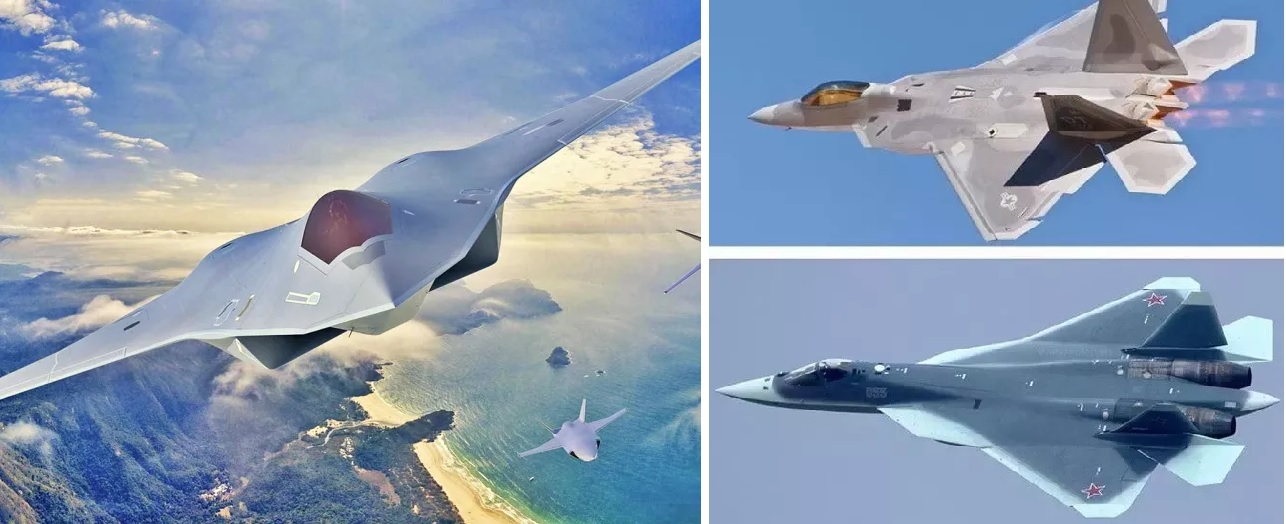 Key Differences Between 5th vs. 6th Generation Fighter Jets
Key Differences Between 5th vs. 6th Generation Fighter Jets
-
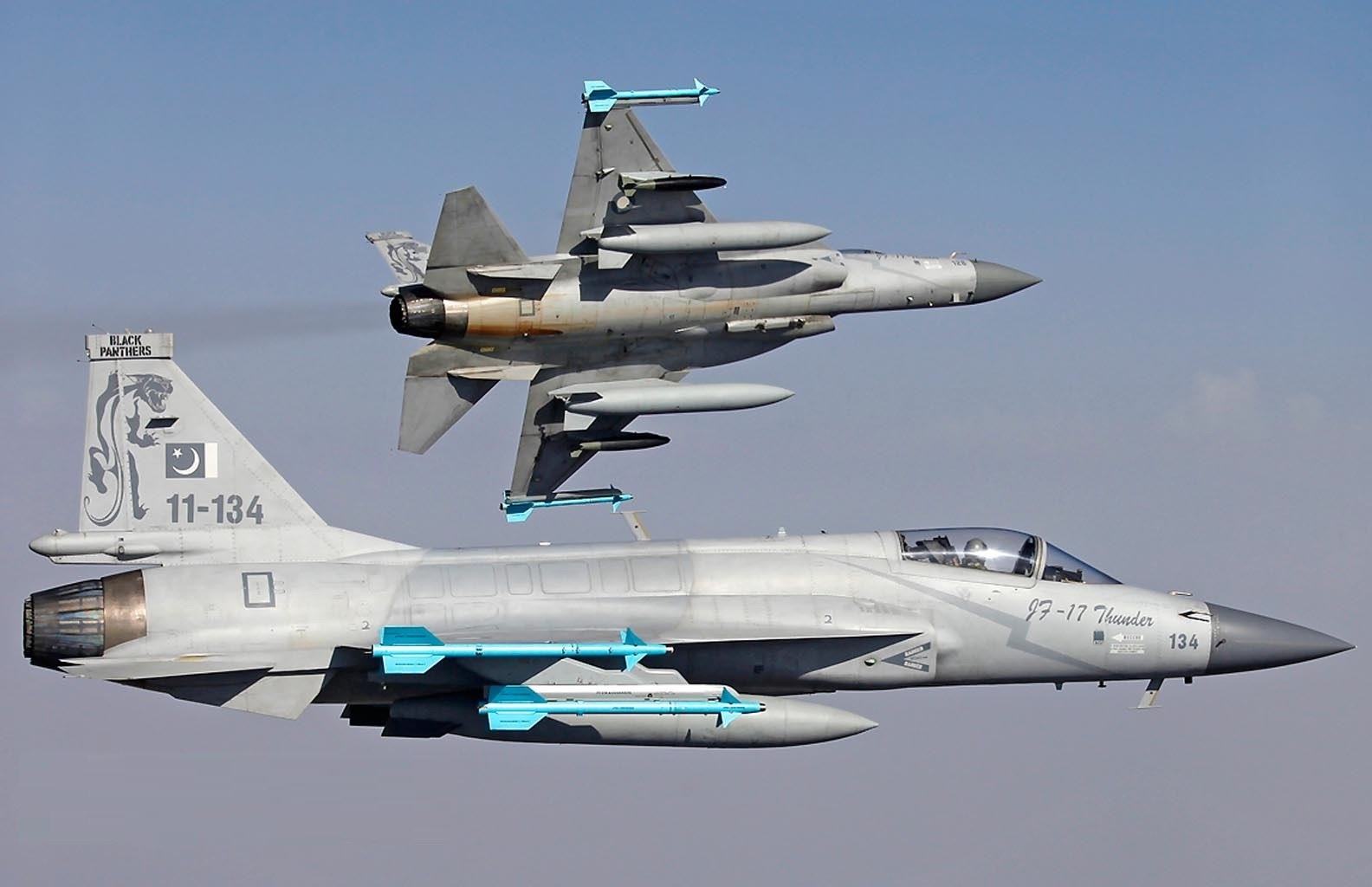 Pakistan Air Force to Unveil Stealth-Enhanced JF-17 Block 4 Fighter Jet by 2028
Pakistan Air Force to Unveil Stealth-Enhanced JF-17 Block 4 Fighter Jet by 2028
-
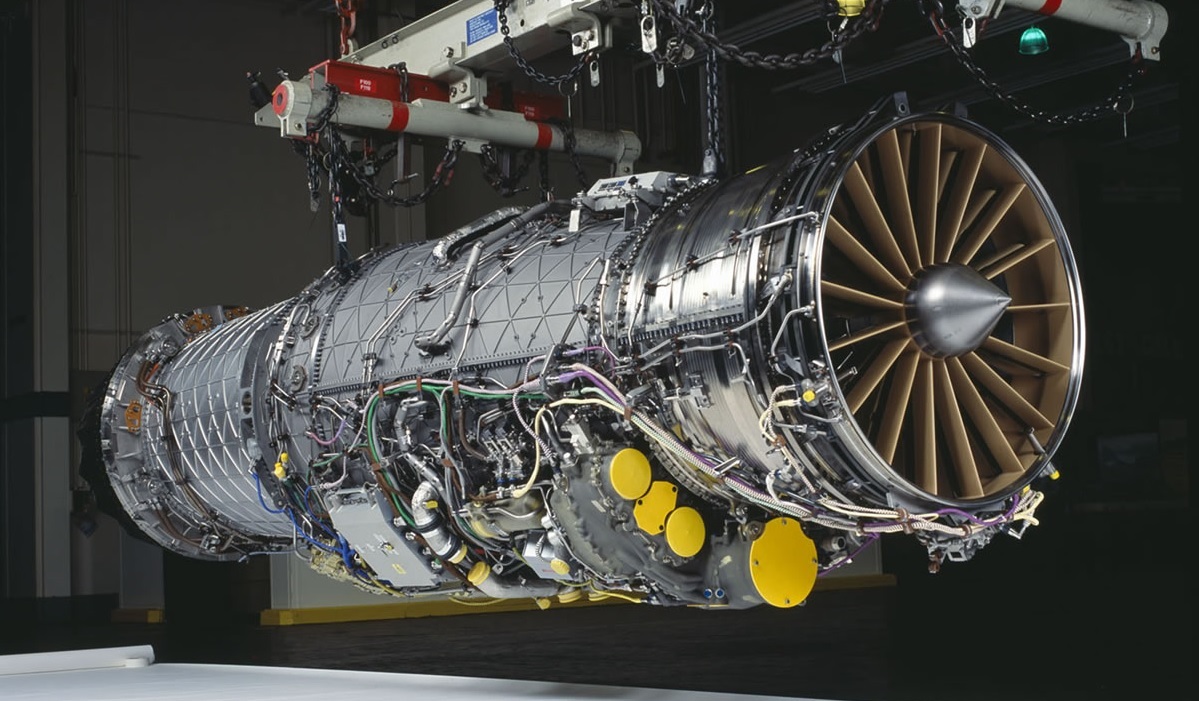 India’s AMCA Engine Decision: Safran vs. Rolls-Royce Final Expected by 2025
India’s AMCA Engine Decision: Safran vs. Rolls-Royce Final Expected by 2025
-
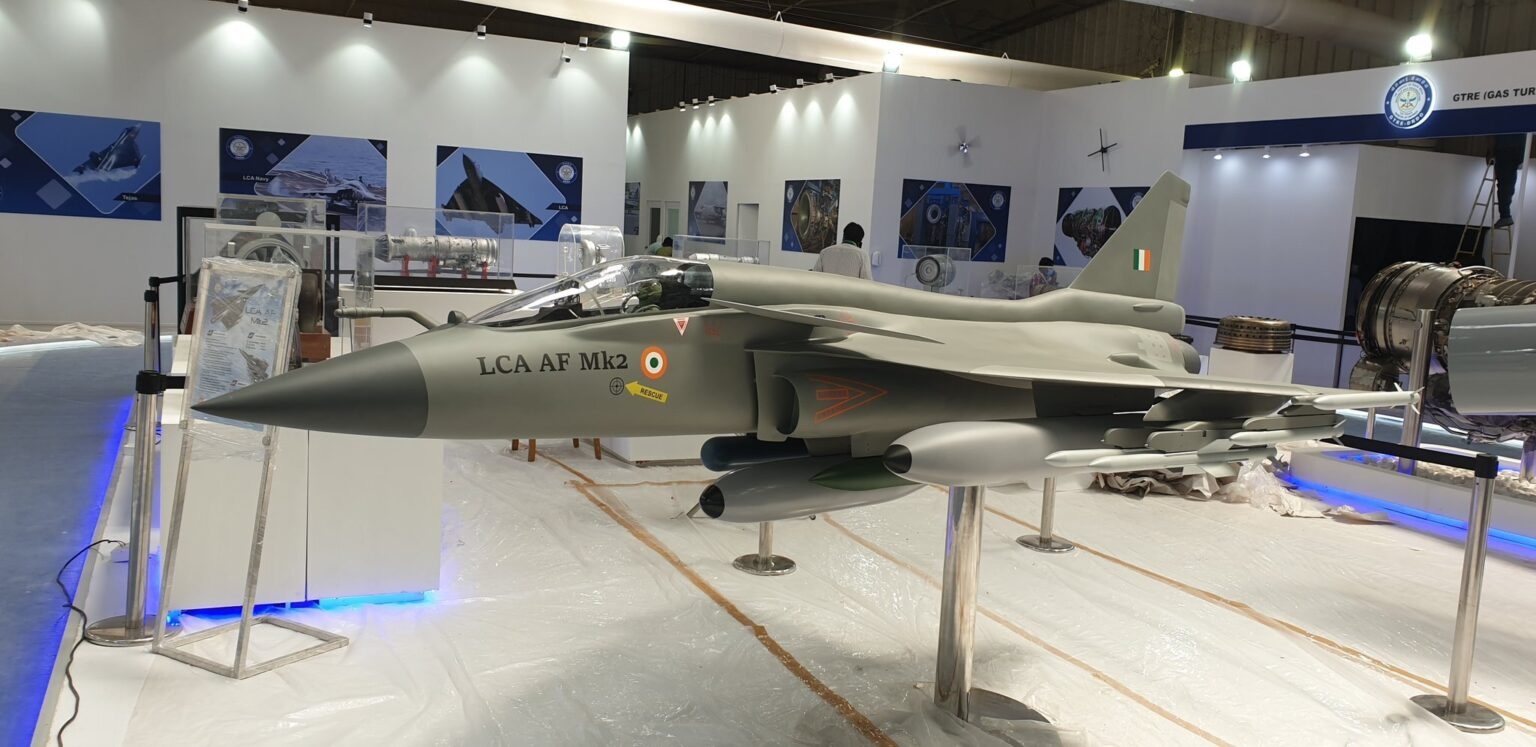 Tejas Mk2 Nears 2025 Rollout as HAL Ramps Up Final Assembly and System Integration
Tejas Mk2 Nears 2025 Rollout as HAL Ramps Up Final Assembly and System Integration
-
 Pakistan Announces 15% Increase in Defence Budget for 2024-25 Amid Economic Crisis
Pakistan Announces 15% Increase in Defence Budget for 2024-25 Amid Economic Crisis
-
 India's TEDBF Program Takes Shape First Flight by 2028: Aiming for Naval Supremacy with Advanced Stealth and Technology
India's TEDBF Program Takes Shape First Flight by 2028: Aiming for Naval Supremacy with Advanced Stealth and Technology
Top Trending in 4 Days
-
 Pakistan Army to Deploy Troops to Gaza by January 2026 Under Trump–Munir Deal, $500 Per Soldier
Pakistan Army to Deploy Troops to Gaza by January 2026 Under Trump–Munir Deal, $500 Per Soldier
-
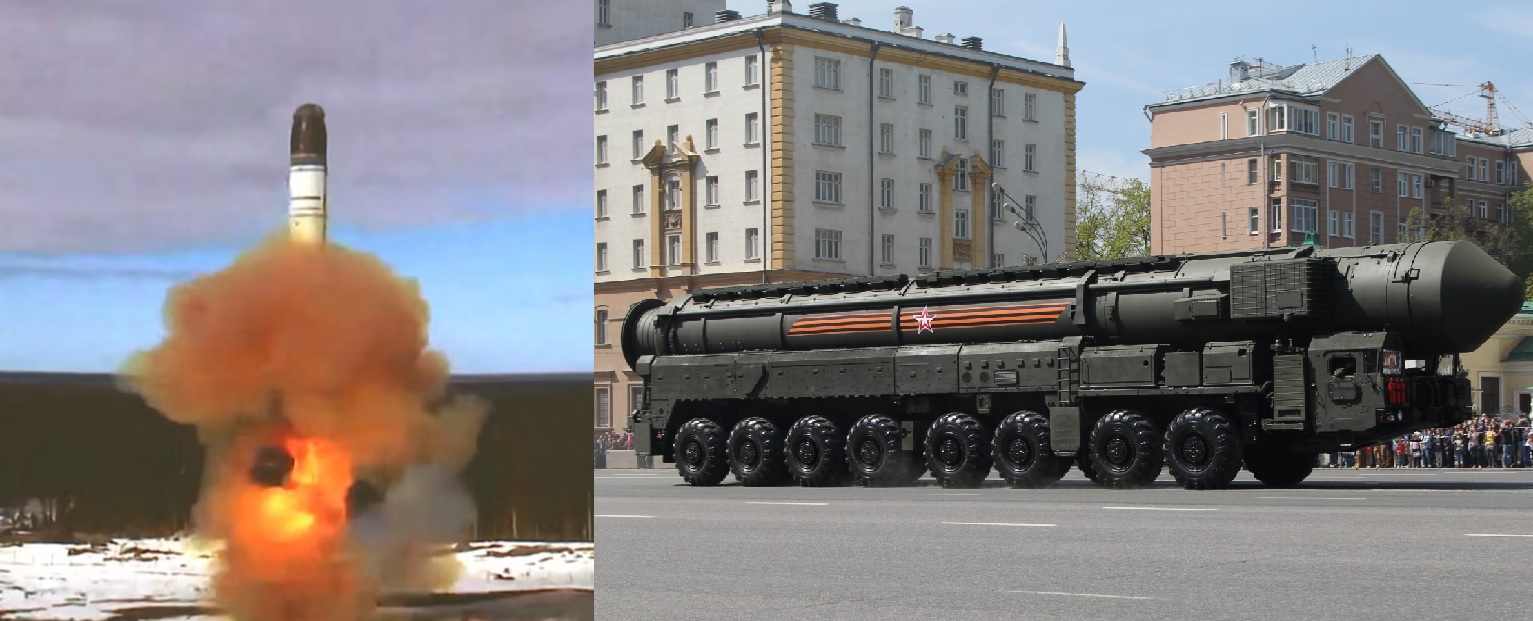 Russia Simulates Full-Scale Nuclear War in Siberia, Deploys Yars ICBMs on Combat Patrols
Russia Simulates Full-Scale Nuclear War in Siberia, Deploys Yars ICBMs on Combat Patrols
-
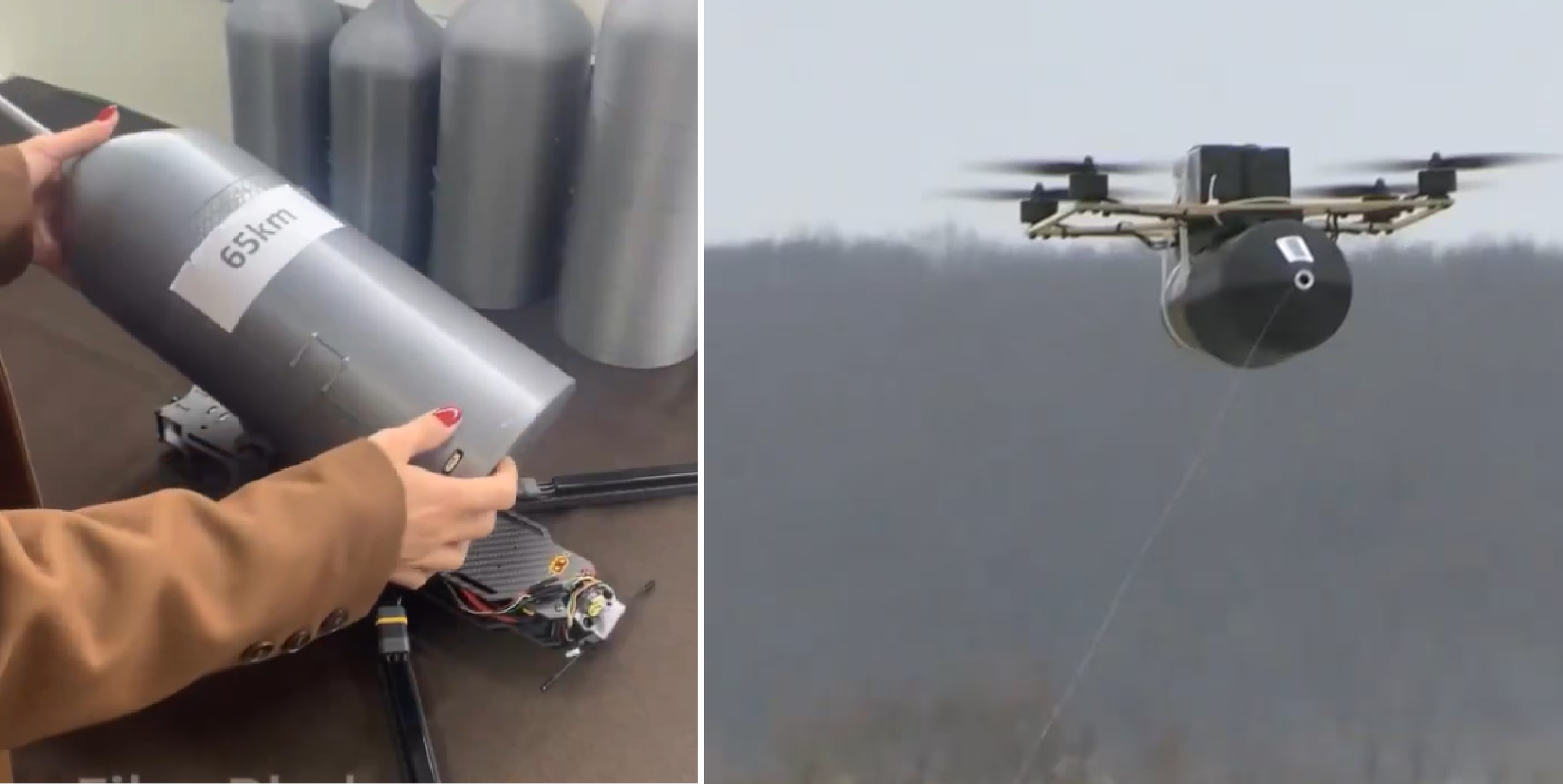 Russia Claims Test of 65-Kilometre Fiber-Optic FPV Drone Link
Russia Claims Test of 65-Kilometre Fiber-Optic FPV Drone Link
-
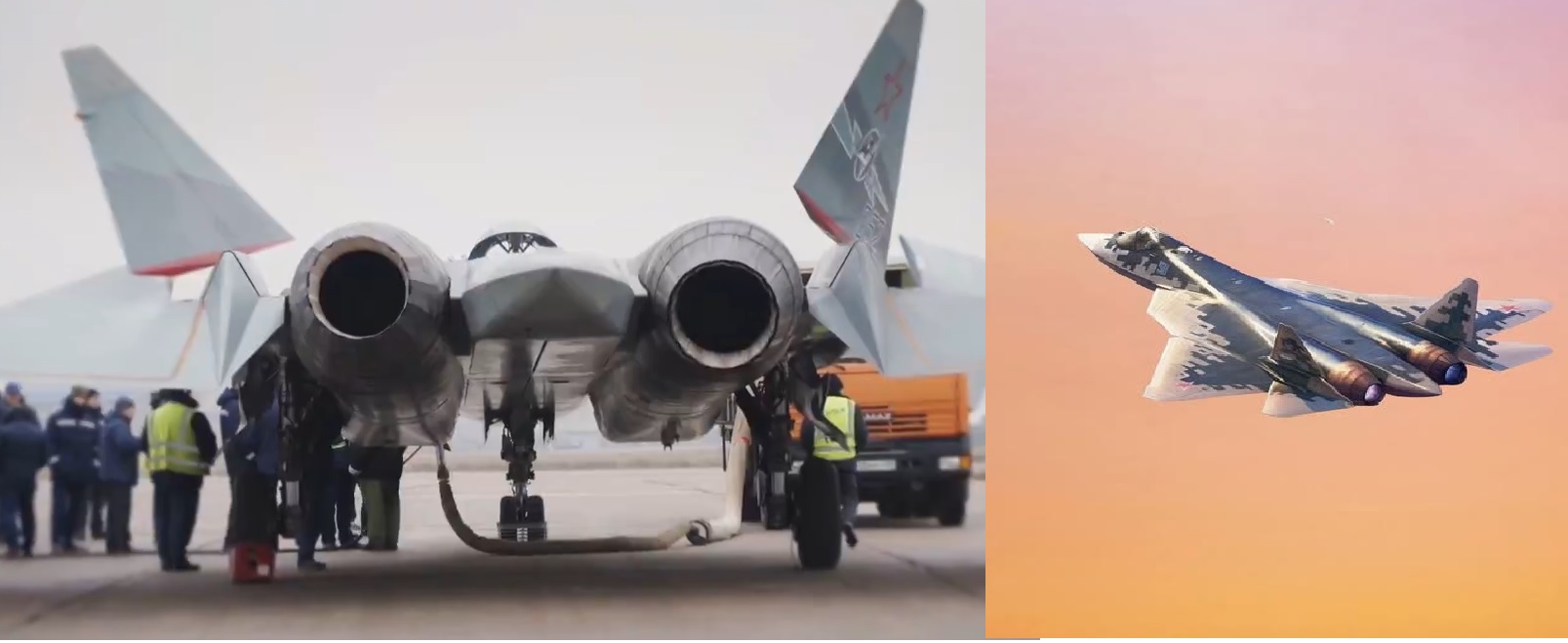 Russian Su-57 Conducts First Flight With Next-Generation Izdeliye-177 Engine
Russian Su-57 Conducts First Flight With Next-Generation Izdeliye-177 Engine
-
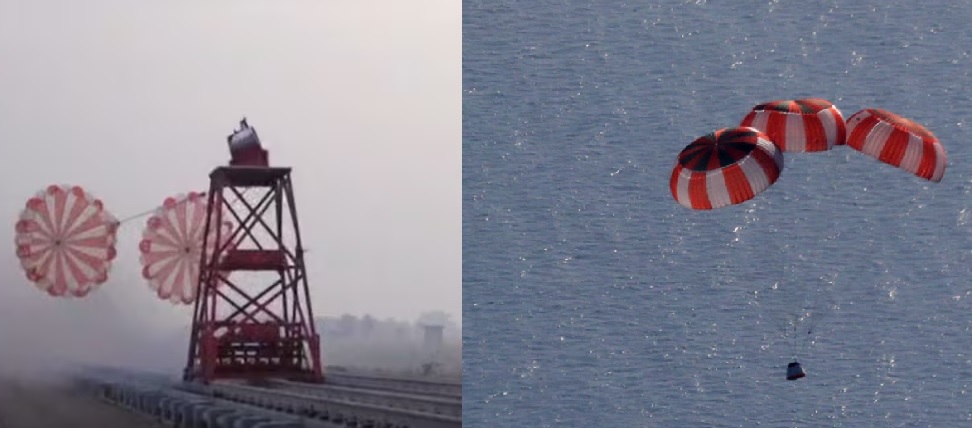 ISRO Successfully Qualifies Drogue Parachutes for Gaganyaan Crew Module
ISRO Successfully Qualifies Drogue Parachutes for Gaganyaan Crew Module
-
 Russian Strike on Mayaki Bridge Threatens Up to 60% of Ukraine’s Fuel Supply
Russian Strike on Mayaki Bridge Threatens Up to 60% of Ukraine’s Fuel Supply
-
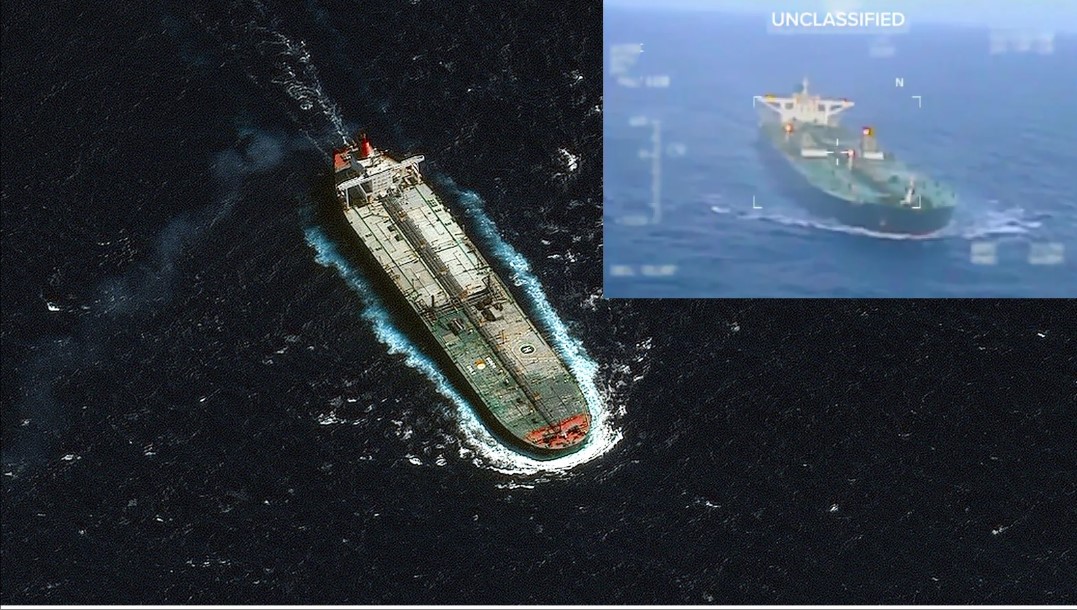 U.S. Seizes China-Linked Oil Tanker Carrying Venezuelan Crude in International Waters
U.S. Seizes China-Linked Oil Tanker Carrying Venezuelan Crude in International Waters
-
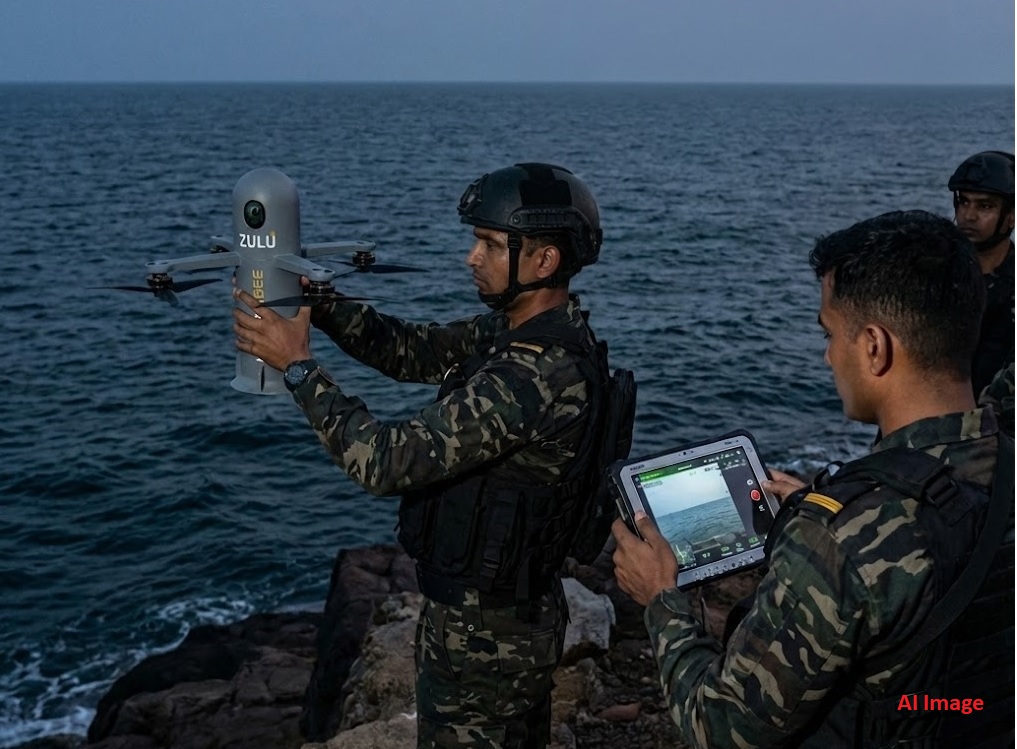 Indian Navy’s MARCOS Induct High-Tech ‘Hoverbee’ Kamikaze Drones for Stealth Operations
Indian Navy’s MARCOS Induct High-Tech ‘Hoverbee’ Kamikaze Drones for Stealth Operations





